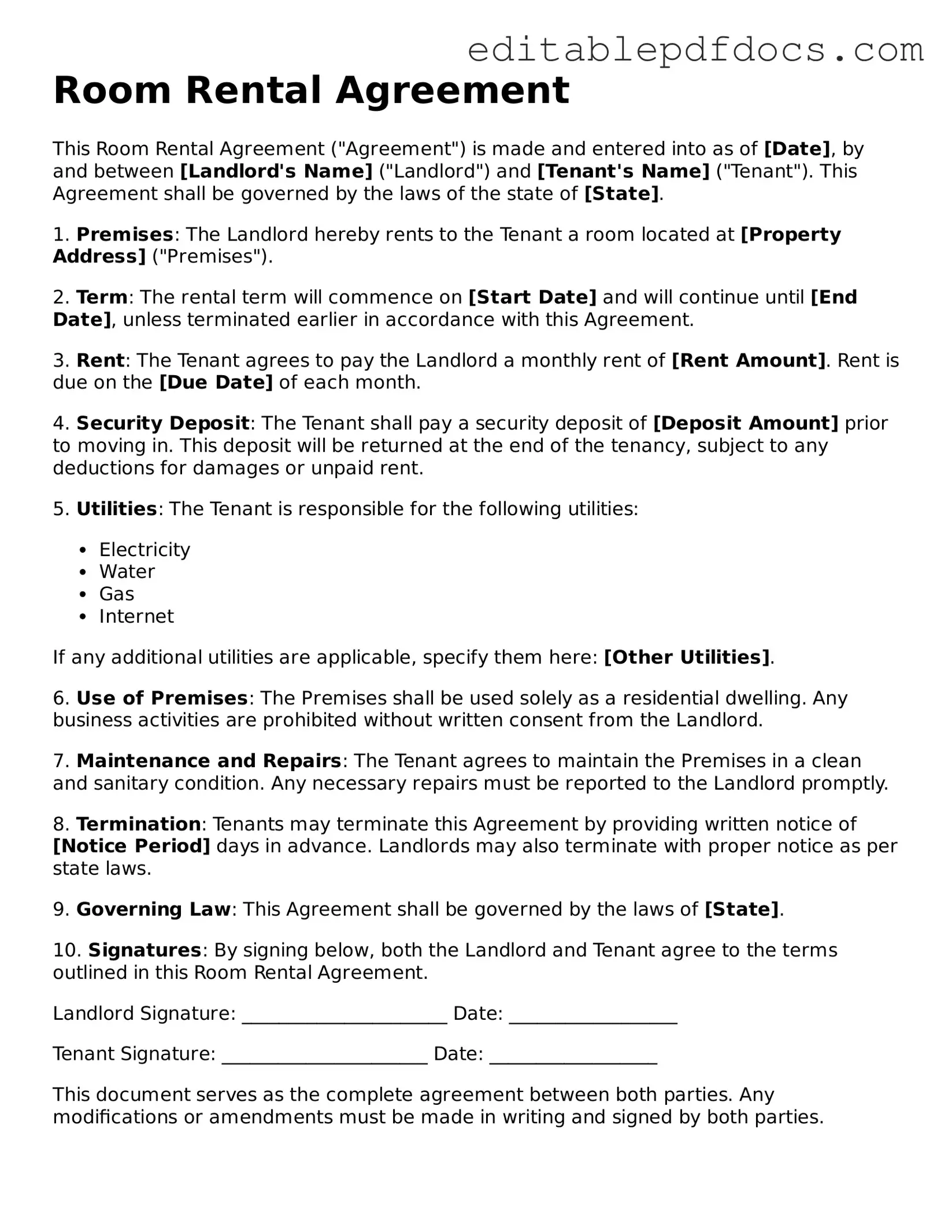Free Room Rental Agreement Document
A Room Rental Agreement is a legal document that outlines the terms and conditions between a landlord and a tenant for renting a room within a property. This agreement helps protect the rights of both parties while ensuring clarity regarding rental payments, responsibilities, and rules. If you’re ready to secure your rental arrangement, fill out the form by clicking the button below.
Open Editor Now
